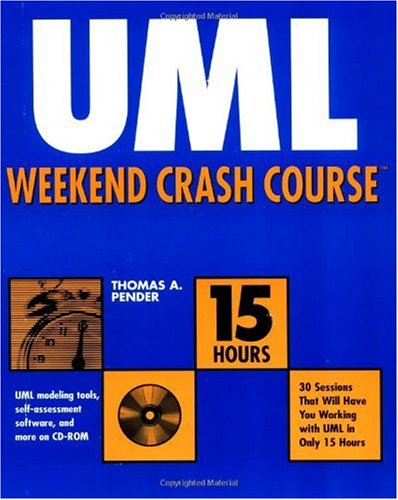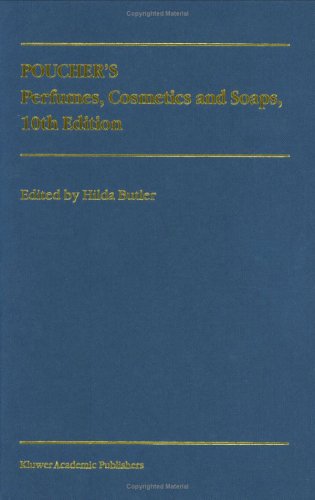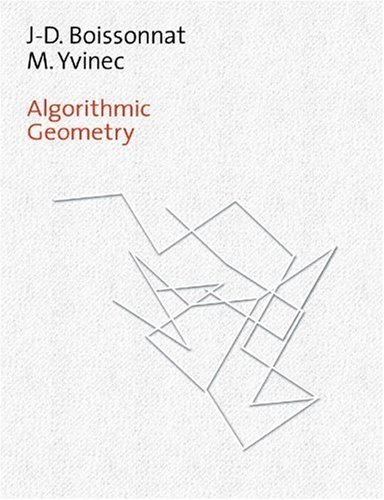Thomas A. Pender0764549103
Table of contents :
UML Weekend Crash Course™……Page 1
Front Matter……Page 4
About the Author……Page 6
Who Should Read This Book……Page 10
Weekend Crash Course Layout and Features……Page 11
Part VI: Sunday Afternoon……Page 12
Reach Out……Page 13
Contents at a Glance……Page 14
Contents……Page 16
FRIDAY……Page 25
PART I: Friday Evening……Page 27
Establishing Standards……Page 28
The UML metamodel……Page 29
The organization of the metamodel……Page 30
UML Extension Mechanisms……Page 31
Ten Diagrams……Page 32
REVIEW……Page 33
QUIZ YOURSELF……Page 34
Some Current Methodologies……Page 36
The Rational Unified Process……Page 37
Strengths of the RUP……Page 38
Shlaer-Mellor Method……Page 39
Weaknesses of Shlaer-Mellor……Page 40
CRC……Page 41
Weaknesses of CRC……Page 42
Weaknesses of XP……Page 43
REVIEW……Page 44
QUIZ YOURSELF……Page 45
Views……Page 46
Functional View……Page 47
Static View……Page 48
Dynamic View……Page 49
Three views……Page 50
Abstraction……Page 51
Information……Page 52
To use the object……Page 53
To make the object work properly……Page 54
Encapsulation summary……Page 55
QUIZ YOURSELF……Page 56
The Case Study Problem Statement……Page 58
Types of Requirements……Page 59
Business process……Page 60
Rules……Page 61
Performance……Page 62
Users……Page 63
Resources……Page 64
Avoiding early pitfalls……Page 65
Pitfall #3: Mistaking preferences for requirements……Page 66
QUIZ YOURSELF……Page 67
Friday Evening Part Review……Page 68
SATURDAY……Page 69
PART II: Saturday Morning……Page 71
Session 5: Understanding the Use Case Model……Page 72
The Purpose of the Use Case Model……Page 73
Use Case narrative……Page 74
Defining the Elements of the Use Case Diagram……Page 75
Use Case actors……Page 76
Use Cases……Page 77
Use Case relationships……Page 78
dependency notation……Page 79
dependency notation……Page 80
Generalization……Page 81
QUIZ YOURSELF……Page 82
Building the Use Case Diagram for the Case Study……Page 84
Step 2: Identify the actors……Page 85
Step 3: Identify the Use Cases……Page 86
Step 4: Define the associations between actors and Use Cases……Page 87
Step 5: Evaluate the actors and Use Cases to find opportunities for refinement……Page 88
Step 7: Evaluate the Use Cases for dependencies……Page 89
Step 8: Evaluate the actors and Use Cases for generalization……Page 90
QUIZ YOURSELF……Page 91
Elements of a Use Case Narrative……Page 92
Pre-conditions……Page 93
Dialog……Page 94
Post-conditions……Page 95
Workflow Requirements……Page 96
Writing a Use Case Narrative for the Case Study……Page 97
Use Case initiation in the case study narrative……Page 98
Use Case dialog in the case study narrative……Page 99
Post-conditions in the case study narrative……Page 100
REVIEW……Page 101
QUIZ YOURSELF……Page 102
Describing Use Case Scenarios……Page 104
Why you should care about Use Case scenarios……Page 105
How to find Use Case scenarios……Page 106
Finding Use Case scenarios for the case study……Page 107
Applying Use Case scenarios……Page 113
QUIZ YOURSELF……Page 114
The Object Model……Page 116
The Class diagram……Page 117
Modeling an Attribute……Page 118
Attribute visibility……Page 119
Creating an attribute specification……Page 120
Elements of an operation specification……Page 121
Creating an operation specification……Page 122
Modeling the Class Compartments……Page 123
Attribute compartment……Page 124
REVIEW……Page 125
QUIZ YOURSELF……Page 126
Session 10: The Class Diagram: Associations……Page 128
Association name……Page 129
Association multiplicity……Page 130
Association constraints……Page 132
Association class……Page 133
Qualified association……Page 134
REVIEW……Page 135
QUIZ YOURSELF……Page 136
Saturday Morning Part Review……Page 137
PART III: Saturday Afternoon……Page 139
Modeling Aggregation and Composition……Page 140
Elements of aggregation……Page 141
Elements of composition……Page 142
Creating aggregation and composition relationships……Page 143
Modeling Generalization……Page 144
Elements of generalization……Page 145
An illustration: How to model generalization……Page 147
REVIEW……Page 149
QUIZ YOURSELF……Page 150
Problem statement: for the inventory control system……Page 152
Building the Class diagram……Page 153
Understanding UML Notation for Design Patterns……Page 156
Using Design Patterns in the Class Diagram……Page 158
QUIZ YOURSELF……Page 161
Understanding the Object Diagram……Page 162
Comparing the Object Diagram and the Class Diagram Notations……Page 163
Applying Object Diagrams to Test Class Diagrams……Page 165
Test case 2……Page 166
Test case 4……Page 168
Modeling workflow and Use Cases……Page 172
Defining methods……Page 173
Guard condition……Page 174
Decisions……Page 175
Merge point……Page 176
Concurrency……Page 177
QUIZ YOURSELF……Page 178
Building an Activity Diagram for the Case Study……Page 180
REVIEW……Page 187
QUIZ YOURSELF……Page 188
Understanding the Dynamic View……Page 190
Mapping interactions to objects……Page 191
Defining the basic notation of the Sequence diagram……Page 192
Defining the extended notation for the Sequence diagram……Page 194
QUIZ YOURSELF……Page 197
Saturday Afternoon Part Review……Page 199
PART IV: Saturday Evening……Page 201
Building a Sequence Diagram from a Scenario……Page 202
REVIEW……Page 208
QUIZ YOURSELF……Page 209
The Collaboration Diagram……Page 210
Diagram differences……Page 211
Collaboration Diagram Notation……Page 212
QUIZ YOURSELF……Page 215
Building a Collaboration Diagram from a Scenario……Page 216
Mapping the Sequence and Collaboration Diagram Elements to the Class Diagram……Page 223
QUIZ YOURSELF……Page 224
Describing the Purpose and Function of the Statechart Diagram……Page 226
Defining the Fundamental Notation for a Statechart Diagram……Page 227
Building a Statechart Diagram……Page 229
Defining Internal Events and Activities……Page 233
QUIZ YOURSELF……Page 234
Saturday Evening Part Review……Page 236
SUNDAY……Page 237
PART V: Sunday Morning……Page 239
Defining Entry and Exit Actions……Page 240
Defining Send Events……Page 242
Order of Events……Page 243
Constructing the Statechart diagram for the product object……Page 244
REVIEW……Page 247
QUIZ YOURSELF……Page 248
Modeling Transition Events……Page 250
Call event……Page 251
Change event……Page 252
Making events conditional……Page 253
Modeling Superstates and Substates……Page 254
Split of control……Page 255
Concurrency……Page 256
QUIZ YOURSELF……Page 257
Deriving a Statechart from Sequence Diagrams……Page 260
QUIZ YOURSELF……Page 267
Describing the Purpose and Function of Packages……Page 268
Packages Provide a Namespace……Page 269
Package dependency……Page 270
Dependency stereotypes……Page 271
Model elements in a package……Page 272
Constructing a Package Diagram for the Case Study……Page 273
REVIEW……Page 276
QUIZ YOURSELF……Page 277
Explaining the Component Diagram……Page 278
Component stereotypes……Page 279
Component dependencies……Page 280
Building a Component Diagram for the Case Study……Page 281
Mapping the Logical Design to the Physical Implementation……Page 283
QUIZ YOURSELF……Page 285
Describing the Purpose and Function of the Deployment Diagram……Page 286
Defining the Notation for the Deployment Diagram……Page 287
Applying the Combined Diagrams to the Case Study……Page 289
QUIZ YOURSELF……Page 295
Sunday Morning Part Review……Page 296
PART VI: Sunday Afternoon……Page 299
The Value of UML in Web Development……Page 300
Basic Web Architecture and Static Web Content……Page 301
Dynamic Web Content……Page 303
Java servlets……Page 304
JavaServer Pages……Page 306
QUIZ YOURSELF……Page 308
The Friendly Reminder Case Study……Page 310
Requirements Gathering……Page 311
Creating the Use Case diagram……Page 312
Analysis……Page 313
Model View Controller……Page 314
JavaBeans……Page 315
MVC pattern in the case study……Page 317
QUIZ YOURSELF……Page 318
Model 2 Architecture……Page 320
Uploading Appointments and Contacts……Page 322
Querying appointments and contacts……Page 323
XML……Page 325
Appointment XML in the case study……Page 326
Web Application Extension……Page 328
QUIZ YOURSELF……Page 329
Explaining the Purpose and Function of Modeling Tools……Page 330
Explaining Evaluation Criteria for Modeling Tools……Page 331
HTML documentation……Page 332
Version control……Page 333
Data modeling integration……Page 334
XML Metadata Interchange……Page 335
Evaluating UML Modeling Tools……Page 336
QUIZ YOURSELF……Page 337
Sunday Afternoon Part Review……Page 338
Friday Evening Review Answers……Page 340
Saturday Morning Review Answers……Page 342
Saturday Afternoon Review Answers……Page 344
Saturday Evening Review Answers……Page 346
Sunday Morning Review Answers……Page 348
Sunday Afternoon Review Answers……Page 350
Using the CD with Windows……Page 352
UML 1.4 Documentation……Page 353
Troubleshooting……Page 354
Glossary……Page 356
Index……Page 368
Wiley Publishing, Inc. End-User License Agreement……Page 382







Reviews
There are no reviews yet.